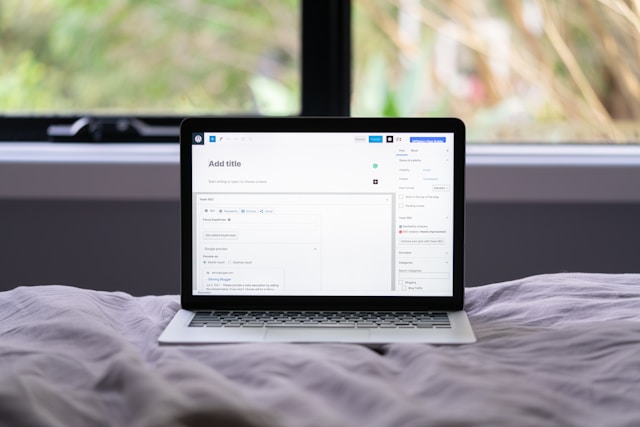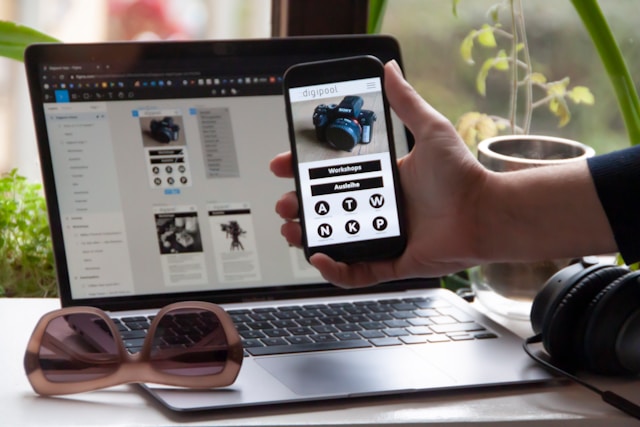How to Forecast Customer Demand: A Guide for E-Commerce Retailers
As the name suggests, demand forecasting is all about using historical data and other information to understand and predict the future demand and total sales and revenue of your products.
Quick Links
As a digital marketer in the ecommerce field, you can use a demand forecasting tool to identify patterns and trends, minimize financial risk, and make better business decisions about everything from inventory planning to marketing and advertising activities.
Demand forecasting is so vital in today’s ecommerce landscape because it enables you to formulate an effective pricing strategy and establish and maintain accurate inventory levels. Failing to anticipate consumer demand can lead to an undersupply or oversupply of stock, inaccurate financial plans, lost sales, and unsatisfied customers.
If you’re looking to forecast your customer demand, then you’re in the right place. In this article, you will learn how demand forecasting works and the different techniques and advantages of demand forecasting.
How Does Demand Forecasting Work?
As mentioned above, demand forecasting involves identifying patterns and trends in consumer demand and product sales. The basic idea is that when you are aware of the demand, you are able to determine the proper time to expand or contract your production capacity.
To get started with the demand forecasting process, one of the most crucial steps you will need to take is to choose the right demand forecasting method for your business need. You can forecast customer demand by either using quantitative or qualitative methods.
The difference between the two methods is that quantitative forecasting methods involve using historical data, such as historical sales and revenue figures, projections based on statistical modeling, website traffic data, and financial and production reports, while qualitative forecasting methods involve making use of industry expert opinions and market trends.
Demand Forecasting Techniques
1 Quantitative Methods
- Barometric Forecasting Method
The barometric method involves using past events, product demand, and statistical and economic indicators to predict future trends in customer demand. The three common types of economic indicators used include lagging indicators, leading indicators, and coincident indicators.
Leading economic indicators refer to economic and industrial statistics that correspond with a future movement in some phenomenon of interest. Lagging economic indicators are observable ones that change some time after the variable changes. Coincident indicators, meanwhile, pertain to metrics that reflect the present condition of the economy.
- Trend Projection Forecasting Method
The trend projection method, also known as the least square method, involves using large amounts of data sets of historical sales data. This method, which is the most classical technique of forecasting for businesses, is based on the assumption that previous sale trends would repeat themselves in the future in a similar way.
- Econometric Forecasting Method
The econometric forecasting method, on the other hand, involves using economic theories in conjunction with statistical tools to predict future trends in consumer demand. This technique, which is considered to be the most reliable method, can either be composed of simultaneous equations or a single-equation regression.
2 Qualitative Methods
- Market Research
The market research method involves using customer surveys to predict future customer demand. The surveys, which usually come in the form of questionnaires, can help measure customer satisfaction and gauge consumer expectations, needs, and preferences.
- Delphi Technique
The delphi forecasting method involves taking advantage of the opinions of a group of experts, such as professional marketing experts or sales executives, to predict future trends in consumer demand. Similar to market research, which uses surveys, you would have to provide the experts with information from predictions of other experts until they all reach a conclusion on the estimates.
- Salesforce Opinion
The salesforce opinion method, meanwhile, involves making use of the opinions of the knowledge and experience of the sales agent with regard to customer needs and market conditions. Each sales agent is asked to assess and forecast the demand and sales in their respective territories, which is then aggregated to reach a final estimate.
Key Advantages of Demand Forecasting
Tracking sales
Demand forecasting can be used as the foundation for making sales projections. These figures typically receive a lot of attention throughout a business simply because it’s the source of a company’s revenue stream. When you’re able to analyze demand appropriately, you’re able to make more intelligent predictions about sales, therefore allowing you to allocate resources accordingly.
Speaking of which…
Better manage your cash flow
One of the major benefits of demand forecasting in ecommerce is that it can help you better manage your cash flow. Not only can demand forecasting help you gain more valuable insight about your customers and your products, but also about your upcoming cash flow, so you can implement efficient cash flow management. This means you can create accurate budgeting and pay your suppliers on time.
Increase your supply chain efficiency
Another major benefit of demand forecasting in ecommerce is that it can help you increase your supply chain efficiency and optimize inventory. Once you have a better idea of how the future could look like, you can schedule your production, shipping and warehousing more effectively.
An efficient supply chain can accelerate your ecommerce processes to meet the expectations of your customers. When customers know that they can trust you when it comes to order fulfillment, they will keep coming back to your space.
Formulate an effective pricing strategy
Another major benefit of incorporating demand forecasting is the ability to set prices correctly for your products. A carefully considered pricing strategy is crucial to optimizing sales volume and profit. Knowing and understanding the future demands of your customers can help you make the right moves at the right time.
Concoct better strategies
In line with the above, when you’re armed with smart demand forecasting, you’re also able to identify opportunities where you can gain an edge over the competition. Whether it’s in business processes, marketing tactics, or improving customer experience, demand forecasting can be used to improve these.
For example, if you know that there will be a dip in demand following the Christmas season, you can focus promotions and other special offers during this period to give yourself a better chance at maintaining a healthy revenue stream.
Tracking performance
As with every aspect of the business, tracking your performance is a crucial element. And when it comes to demand forecasting, a smart one could serve as a guide for a number of departments like marketing, shipping and fulfillment, and scaling operations.
When you regularly keep an eye on your performance, you’re able to adopt an agile approach to business, allowing you to adapt and respond to whatever the situation may be.
Final Words:
In order to make more informed business decisions for your ecommerce store, you must take advantage of demand forecasting. There are a number of ways to forecast your customer demand and product sales, and the best way to choose the right technique is to consider your needs and find the right demand forecasting software for your business.
Author Bio: Manuel Fornillos, Chief Content Officer
Hello! I am Manuel Fornillos, the Chief Content Officer of Startup Credo. My writing proficiency covers the topics about social media, digital marketing, technology, mobile applications and business.
When I was younger, I fell in love writing my emotions through poems and as years gone by, I used my gift by making informative articles regarding new technologies to reach out my reader’s souls.
When I’m not writing you’ll see me in my garden with my plants to refresh with nature.
Common Data Migration Challenges and How to Overcome Them
In the era of technology, data serves as the backbone of companies. Whether it's client details,…
0 Comments13 Minutes
SIEM at a glance (Security information and event management)
You have a contingency plan like most other intelligent businesses, but what if it fails? And,…
0 Comments12 Minutes
Breaking the Mold: Unconventional Methods for Business Growth with WordPress
If you have implemented WordPress for your website, or are considering migrating to it, chances…
0 Comments13 Minutes
Web and Mobile App Development Trends to Consider in 2024
As technology continues to evolve at a rapid pace, staying ahead is essential for developers and…
0 Comments8 Minutes
What Are the Top 10 Web Development Tools for Beginners?
Web development is the art of building and updating web pages that Internet users Interact with.…
0 Comments13 Minutes
Does Your Branding Need A New Look?
From time to time, it’s important and necessary to check over your branding, to ensure that it is…
0 Comments4 Minutes
Essential Skills for AI-Driven Digital Marketing
Digital marketing is changing a lot. Artificial intelligence (AI) is becoming really powerful and…
0 Comments10 Minutes
A Handbook for Crafting Outstanding Email Automation Plans
Email marketing is an essential tool for communication in digital marketing platforms. Managing…
0 Comments8 Minutes








